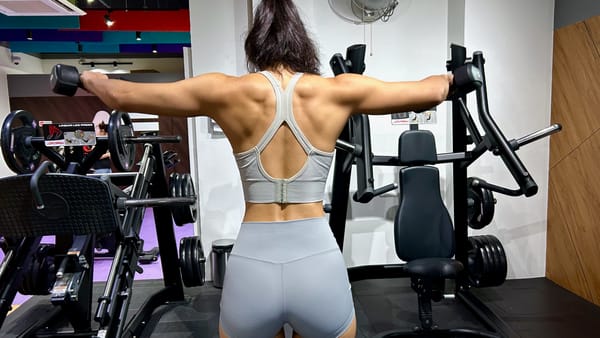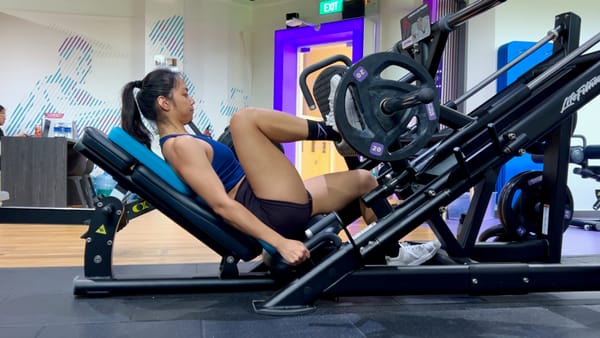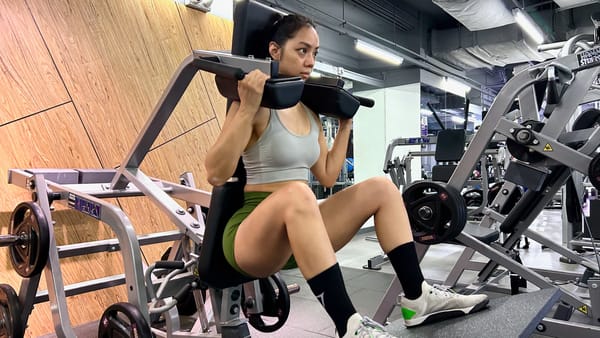How to Get Bigger Hamstrings (2 Types of Exercises)
Learn how to get bigger hamstrings with knee flexion based and hip extension based exercises. Plus, tips and FAQs on hamstring training.
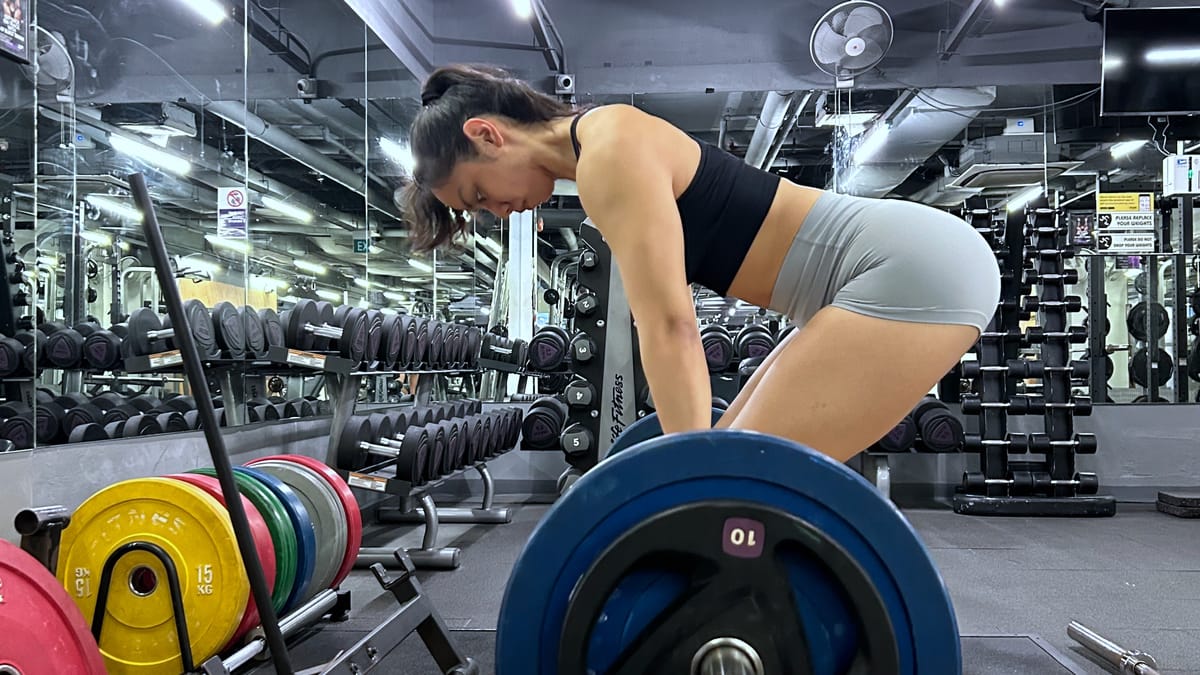
Be honest, your hamstrings have been an afterthought, right?
That’s why you’re (desperately) figuring out how to get bigger hamstrings to balance it all out.
You’re in luck — because we know what it takes to get your hamstrings popping.
Why get bigger hamstrings?
Balanced power
Chances are, here’s how you prioritize leg exercises: glutes, quads, then “others”.
Now, it’s perfectly fine to show more love to certain muscle groups.
But you’ve got to (at least) do enough to help surrounding muscle groups keep up.
This helps you:
- Maintain steady progress in your training
- Prevent injuries resulting from a strength imbalance between muscle groups
Balanced aesthetics
Ah … the REAL reason you want to train hamstrings.
Legs with selectively big muscle groups just don't look as good. Period.
You need the hamstrings to go with your quads and glutes.
Hamstring muscles anatomy
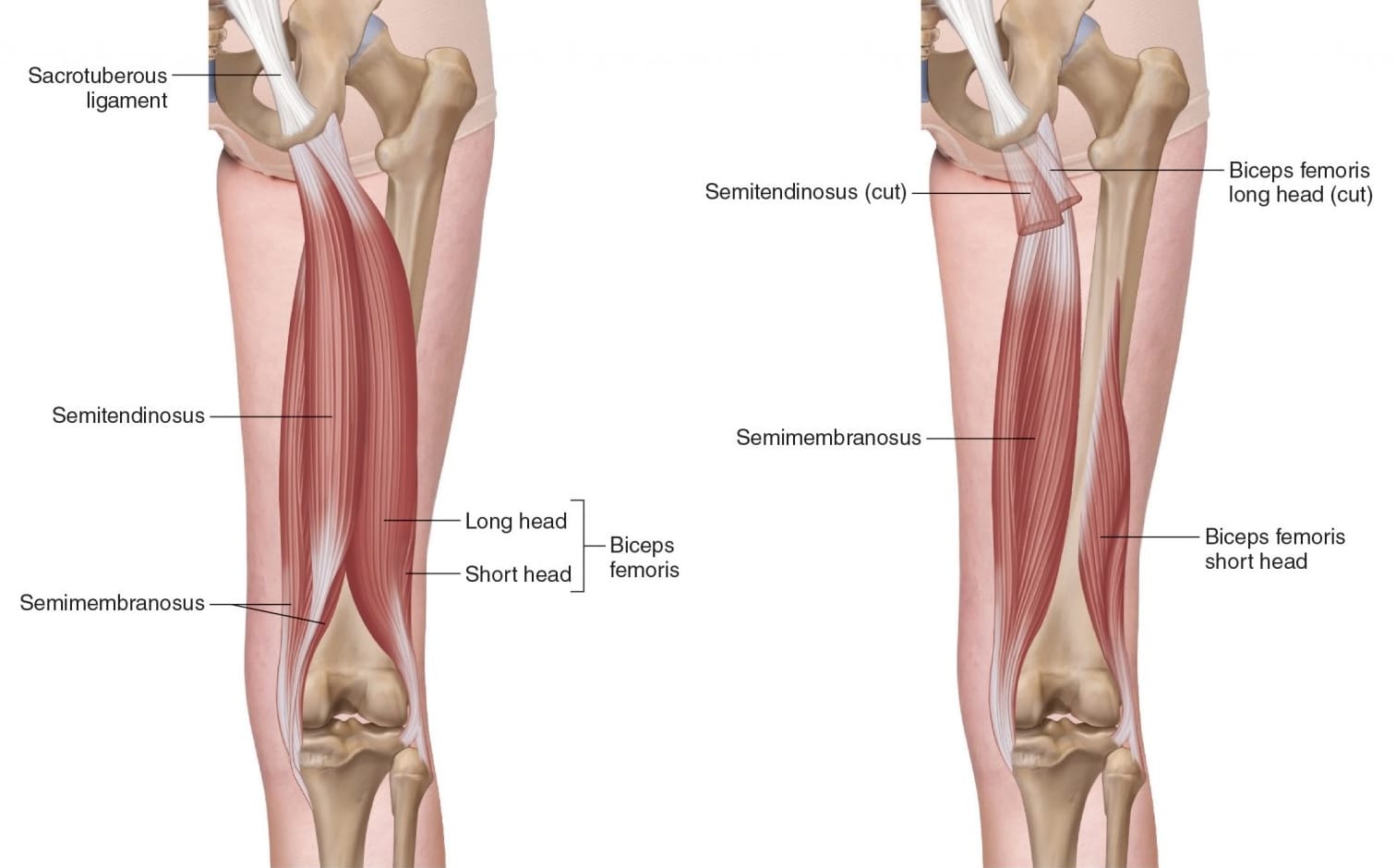
Your hamstrings are made up of 3 muscles:
- Biceps femoris: Further divided into short and long head
- Semitendinosus: Longest of the hamstring muscles
- Semimembranosus: Largest of the hamstring muscles
The hamstring muscles are a predominantly biarticular group. This means they run across both the hip and knee joints.
Together, your hamstring muscles allow you to:
- Flex your knees
- Extend your hips
How to get bigger hamstrings?
Train your hamstrings at least 2 times a week
Ideally, you should train your hamstrings at least twice a week to maximize hypertrophy.
What about beginners? Prioritize form at this stage. Build a strong foundation and progress gradually by adding more sets over time. Work toward hitting at least 10 sets per week.
Eat enough and recover well
While you don’t necessarily need a calorie surplus for hypertrophy, it’s likely to give you better results.
Beyond nutrition, take care of your recovery and stress levels as well.
Get enough rest and manage your stress the best you can. These can all contribute to your muscle growth.
Exercises to get bigger hamstrings
Remember how hamstrings help you flex your knees and extend your hips?
That’s why we’ve divided hamstring exercises into 2 categories:
- Knee flexion based
- Hip extension based
You’d want to include both types of hamstring exercises in your program to train your muscles in a comprehensive way.
Knee flexion exercises for hamstrings
In simpler terms, these are exercises where only your knee joints are moving.
Lying leg curl
We’re sure you’re familiar with the lying leg curl (aka prone leg curl).
Here's the lying leg curl:
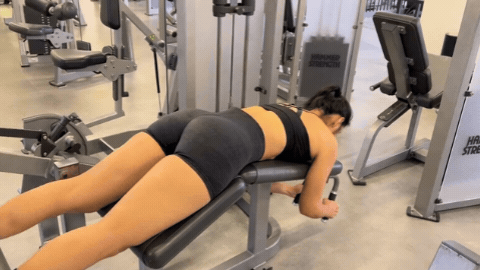
This exercise sets your hips at a 30-degree angle.
This hip angle remains fixed throughout, so your hamstrings can fully focus on knee flexion.
Benefits of leg curls
Leg curls (whether lying or seated) are excellent options for training hamstrings.
In practice, it’s difficult to substitute the leg curls since they’re:
- Really easy to set up
- Available in most gyms
- Simple to master
Seated leg curl
Often used as substitutes for each other, the seated and lying leg curls are very similar exercises.
Here's the seated leg curl (👀 intense stare is optional):
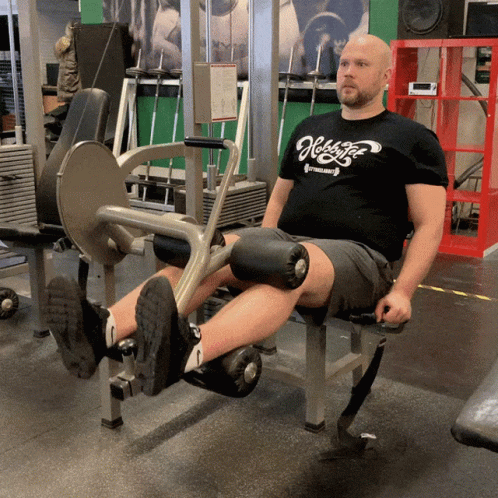
Of course, there’s one big difference: the seated leg curl sets your hips at a 90-degree angle.
Research suggests that the seated leg curl is better than the lying leg curl at growing your hamstrings. It’s believed that the seated leg curl places more stretch on your hamstrings (due to a greater hip angle), leading to more muscle growth.
Exciting, but don’t get too eager here.
Don't abandon the lying leg curl just yet
That’s just the findings from 1 study. More research needs to be done for a clearer picture.
Interestingly, the study has also suggested that the lying leg curl could be more effective for training the monoarticular biceps femoris short head.
Seated leg curl vs Nordic hamstring curl
Another study has suggested that the seated leg curl is more effective for hamstring hypertrophy than the Nordic hamstring curl — a famously brutal exercise, even for advanced trainees.
More on the Nordic hamstring curl later.
Glute-ham raise (GHR)
The glute-ham raise is a wonderful exercise if your gym has a GHD machine.
One study ranked the GHR as one of the best exercises for activating hamstrings, alongside the Romanian deadlift (RDL).
Here’s how to perform the GHR (weighted):
Don’t have access to the GHD machine? Or afraid of getting hung upside down? Try the Nordic hamstring curl instead (more on that next).
Don't confuse it with GHD back extension
Besides glute-ham raises, you can do back extensions on the GHD too!
This, plus the fact that GHD machines aren’t as commonly talked about, is often a source of confusion.
Here’s how to do the GHD back extension:
@taralaferrara Have you tried this before?!
♬ Roxanne - Instrumental - Califa Azul
To be clear, the GHD back extension is a perfectly fine exercise! It works your hamstrings through hip extension, just like the typical 45-degree hip extension exercise.
But since we’re focusing on knee flexion exercises here, the GHR is what you want.
Nordic hamstring curl
This one looks easy but isn’t — trust us (before you face plant). 🥹
Here’s a great Nordic hamstring curl demo:
It has a similar movement pattern to the GHR but with a different setup and resistance profile.
The key difference in setup:
- Nordic hamstring curl: Anchored below the knees
- GHR: Anchored above the knees
This tiny difference makes the “curling” portion of the exercise way harder in the Nordic hamstring curl.
It’s hard even with just body weight. And that’s why the Nordic hamstring curl has a whole load of progressions you can try.
While more conventionally used as an injury prevention tool for athletes, this exercise could be a wonderful tool for hamstring hypertrophy too.
New to the exercise? Check out one of the best tutorials on the Nordic hamstring curl.
Hip extension exercises for hamstrings
Simply put, these are exercises where it’s mainly just your hips moving.
Romanian deadlift (RDL)
You’re probably familiar with this one. Because the RDL is one of the most popular exercises for glutes.
RDL isn’t just great for glutes. It’s a wonderful option for training your hamstrings too.
A study ranked the RDL as one of the best exercises for hamstring activity, alongside the GHR.
Here’s an excellent RDL tutorial:
While RDLs are often done with barbells, you have plenty of other setups you can try — from machine-based options to unilateral RDLs.
Here are some useful RDL variations!
Dumbbell RDL
This could be a more comfortable setup for some since the weights can be positioned toward the side of your legs (instead of being in front).
This shifts the weight closer to your center of mass (than in a barbell RDL).
Here’s how to get the dumbbell RDL right:
@jazz.fitness_ Stop holding DBs like they’re a barbell!⚠️ The benefit of using dumbbells, particularly if you’re still learning to hip hinge is that you don’t need to hold them out in front of you! So rather than holding the dumbbells together end-to-end in front of your legs, keep the arms in a more neutral position by your sides. That way, you can focus more on what’s happening at your hips and might feel a bit less load through your back too. Little tweak, big difference! #rdl #dumbbellRDL #romaniandeadlift #RDLtutorial ♬ original sound - Coach Jazz
That said, dumbbell RDLs could be a little more cumbersome than the barbell version once you hit heavier weights.
Try to imagine this:
- It’s easier to wrestle 1 really heavy barbell than 2 heavy dumbbells
- It’s safer to move individual weight plates than 2 heavy dumbbells
- It’s harder to rack heavy dumbbells than weight plates
- It’s scary to navigate a crowded gym with heavy-ass dumbbells
Smith machine RDL
Looking for the simplest setup? The Smith machine RDL might be your best option.
Here’s a Smith machine RDL demo:
What’s more, the Smith machine adds stability to the movement, allowing you to emphasize overloading with heavier weights. Great news for your hamstrings!
Crowded gym? Smith machines are always available, take full advantage of them:
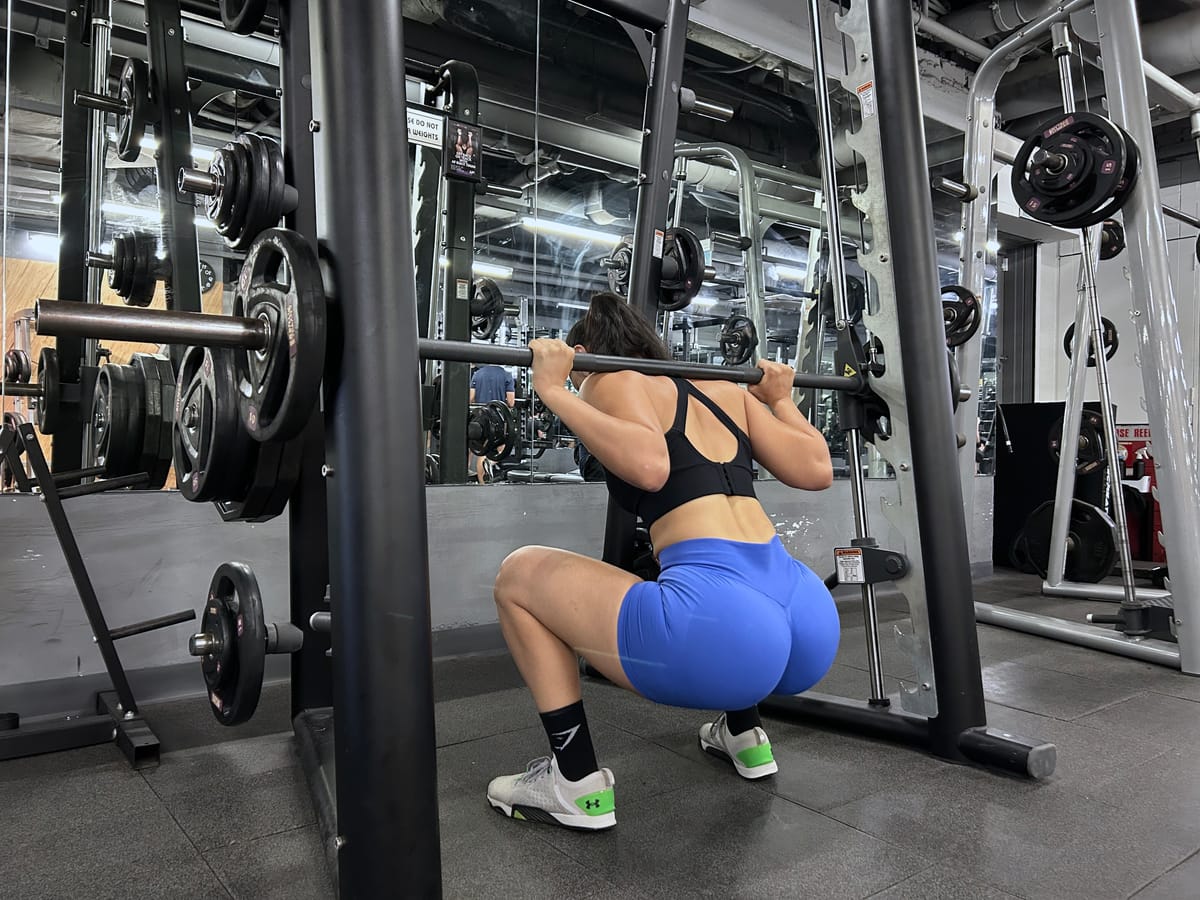
B-stance RDL
The B-stance RDL bridges a regular RDL and the single-leg RDL. Think of it as “semi-unilateral”.
It’s an excellent exercise for working on a weak side or simply adding variety to your hamstring training.
Here’s how to do the B-stance RDL:
The B-stance RDL is popular because:
- It allows you to train unilaterally with minimal change to technique
- It’s not much harder to balance than with the regular RDL
- It lets you work with significantly more weight than on a single-leg RDL
Single-leg RDL
The single-leg RDL is a wonderful alternative to try for training hamstrings.
Of course, getting it right takes a bit of practice. For some, it can feel quite different from a regular RDL due to the sudden jump in balance needed.
Check out this tutorial on the single-leg RDL:
Can’t figure out the balance? Or simply too limited in the weight used? Give yourself more support on the single-leg RDL by holding on to a machine or rack.
Here’s how to get support on a single-leg RDL:
@mdjfitness my peachy superset recipe✨💅🏻 #gymadvice #fitnessgirls #gymtiktok #gluteworkout #oneractive ♬ In My Mind (feat. Crystal Waters) - Never Dull
Shrug machine RDL
OK, the shrug machine RDL is hands down the fastest and most stable setup you can get.
You can have a whole load of fun with it — if your gym has one, of course.
Here’s how the shrug machine RDL is done:
@biancaluptonnn Get more put of shrug machine RDLS 🍑 #rdl #romaniandeadlift #shrugmachine ♬ original sound - ︎ ︎
Some things to note for the shrug machine RDL:
- Elevate your feet with a weight plate (or step board) if you need more range
- The weight moves away from you at the bottom range, so it can take some getting used to
Good morning
You don’t see the good morning exercise as much in the gym.
It sounds hilarious, but don’t worry, it’s a solid option for training hamstrings (and we think it looks pretty hardcore 😈).
Here’s how to do the good morning exercise:
The good morning’s movement pattern is similar to the RDL’s with a key difference: the weight sits on your back (instead of your hands).
Naturally, this means you have to go much lighter. This is because the weight will be further away from your center of mass than in the RDL.
Back extension (45-degree hip extension)
The back extension is a wonderful exercise if you want a stable setup that you can use to emphasize overloading with heavier weights.
Here’s how to do the back extension (45-degree hip extension):
This study suggests that the back extension could be better than the RDL at working your biceps femoris and gluteus maximus.
What’s more, the back extension complements the RDL with its different resistance profile.
Here’s a brief comparison:
- RDL: Toughest at the bottom when hips are flexed
- Back extension: Toughest at the top when hips are extended
If possible, include both exercises in your hamstring training.
Just like the RDL, there are some variations of the back extension you can try.
Barbell back extension
Starting to need too many weight plates for back extensions? Do it with a barbell.
It’s a good option when working with heavier weights that are difficult to set up with weight plates alone.
Here’s a great demo of the snatch grip barbell back extension:
Landmine back extension
Yes, the landmine back extension is a thing. (TBH, we were surprised too. 🤯)
Check out the setup for the landmine back extension:
@sharellegrant Landmine Hyperextension😮💨🫠🔥 #gluteworkout #legday #glutes #musclebuilding ♬ Conor Mcgregor x Biggie Smallz - Jxseph123890
This setup makes the back extension slightly more stable than the regular version because the weight is now anchored by the landmine attachment.
Plus, you won’t have to worry about struggling with a stack of weight plates.
Only catch? You’d need to have both the Roman chair and landmine side by side.
Practical application for training hamstrings
Now that you know your exercise options, it’s time to put them into your workouts!
Here’s a summary:
- For variety: Include both knee flexion- and hip extension-based hamstring exercises
- For volume: Train your hamstrings at least 2 times a week
- For progression: Pay attention to progressive overload, recovery, and nutrition
- For programming: Account for any overlaps with glute exercises you’re doing
😊 We think you’re all set to get bigger hamstrings!
FAQs about training hamstrings
Here are some questions you might have about training hamstrings.
Let’s get them out of the way!
How often should I train my hamstrings?
Your training frequency depends on your training experience. In general, you’d want to:
- Train hamstrings at least 2 times a week
- Aim for 10 to 20 sets of hamstring exercises per week
From here, monitor your progress and adjust your volume based on how your hamstrings respond.
Are squats enough for training hamstrings?
Unfortunately, no.
Why does that happen? Because hamstring muscles are mainly biarticular (they cross both the knee and hip joints), they behave differently at each joint.
In a squat, your hamstrings will:
- When descending: Shorten at knee, lengthen at hip
- When ascending: Lengthen at knee, shorten at hip
These opposing forces happen at the same time, resulting in the hamstrings not changing much in length during a squat.
This limits the stimulation placed on the hamstrings and how much they can grow.
Why are there so many similar exercises for hamstrings and glutes?
Glutes and hamstring both share a similar function: hip extension. In fact, they work together to make that happen.
As such, hip extension-based exercises (RDL, good morning, back extension) are going to involve both glutes and hamstrings no matter what.
TBH … we think that’s a great deal!
Can I do hip thrusts to train my hamstrings?
Sure, the hip thrust is a hip extension exercise — but it’s not the most effective option for training hamstrings.
Research suggests that the deadlift activates the hamstrings better than the hip thrust. (That said, hip thrusts are still better than squats for hamstring activity.)
Suggested takeaway? A deadlift movement pattern (e.g., RDL) is a better option for targeting hamstrings. Keep the hip thrust for what it does best — training glutes.
Can I do the conventional deadlift instead of RDL for the hamstrings?
Of course! But if your goal is hypertrophy, RDL is likely the better choice.
And don’t forget about recovery. In practice, RDLs are generally less demanding on recovery than conventional deadlifts. This makes it easier to include RDLs in your training.
How deep should I go for RDL?
In practice, feeling a good stretch on your hamstrings is a decent indicator.
Of course, going deeper on the RDL is perfectly fine! Just know that the extra ROM is likely coming from your lower back and/or your knees.
How do I make my hamstrings more defined?
To get more visual details on your hamstrings, you need 2 things:
- Larger hamstring muscles
- Lower body fat
Lower body fat is arguably more important here since you might already have enough muscle mass in your hamstrings.
That said, losing fat means going into a calorie deficit. This not only prevents you from growing your hamstrings effectively, but you also risk losing muscle mass.




